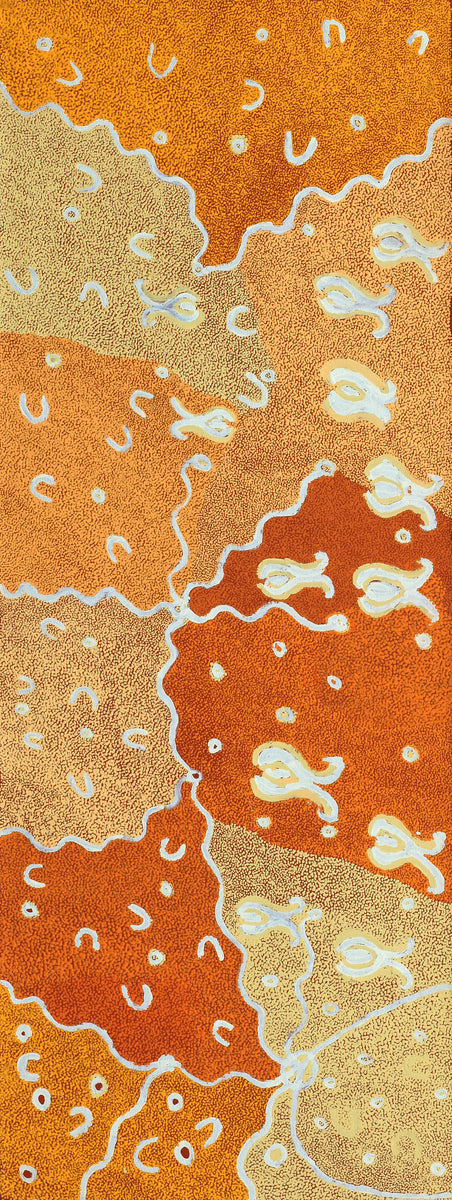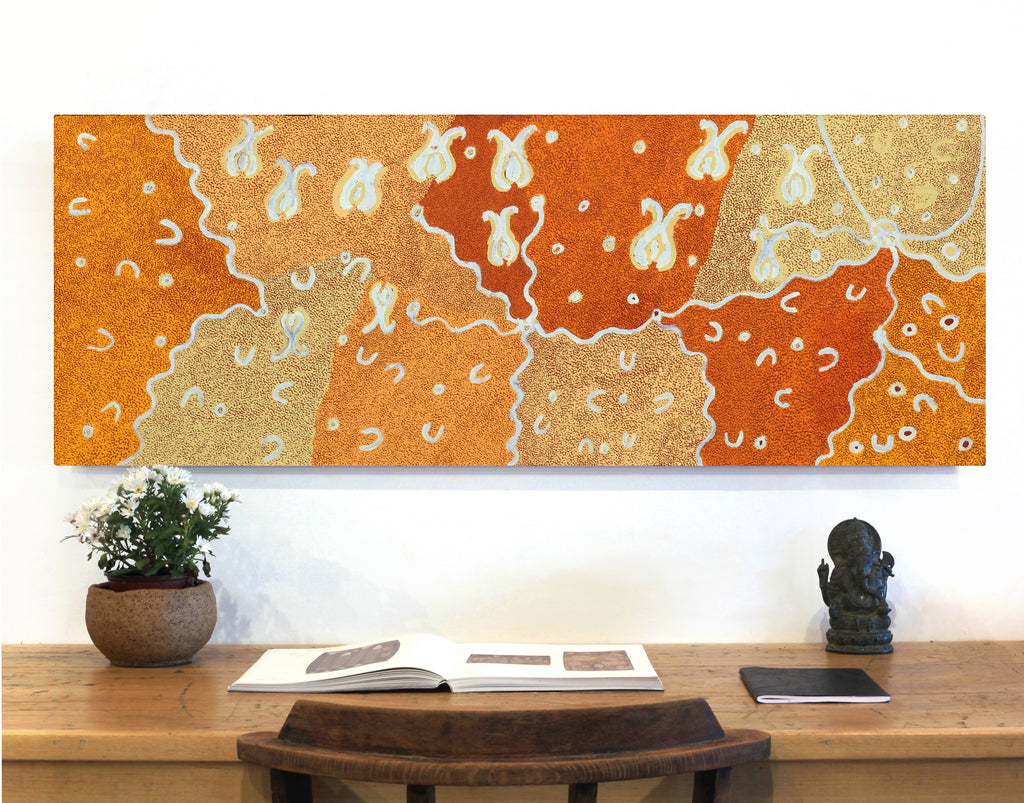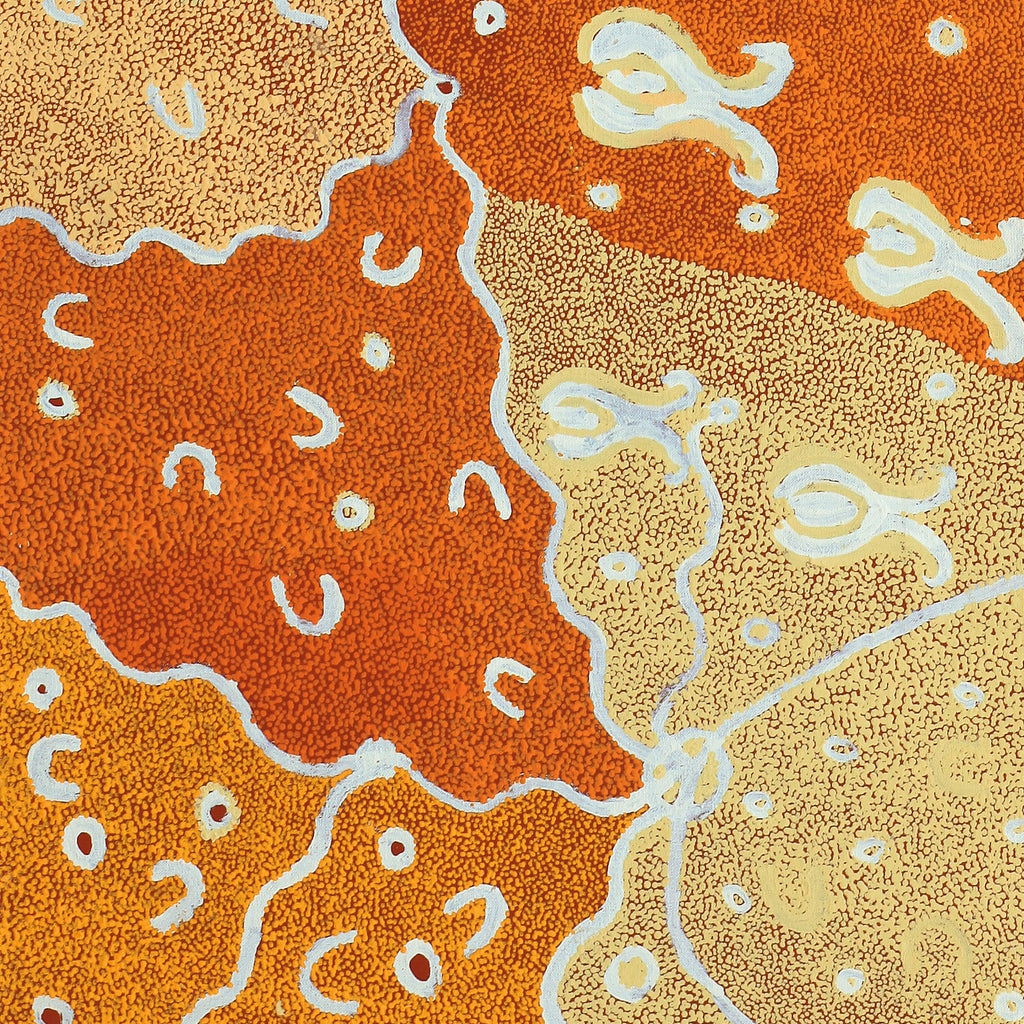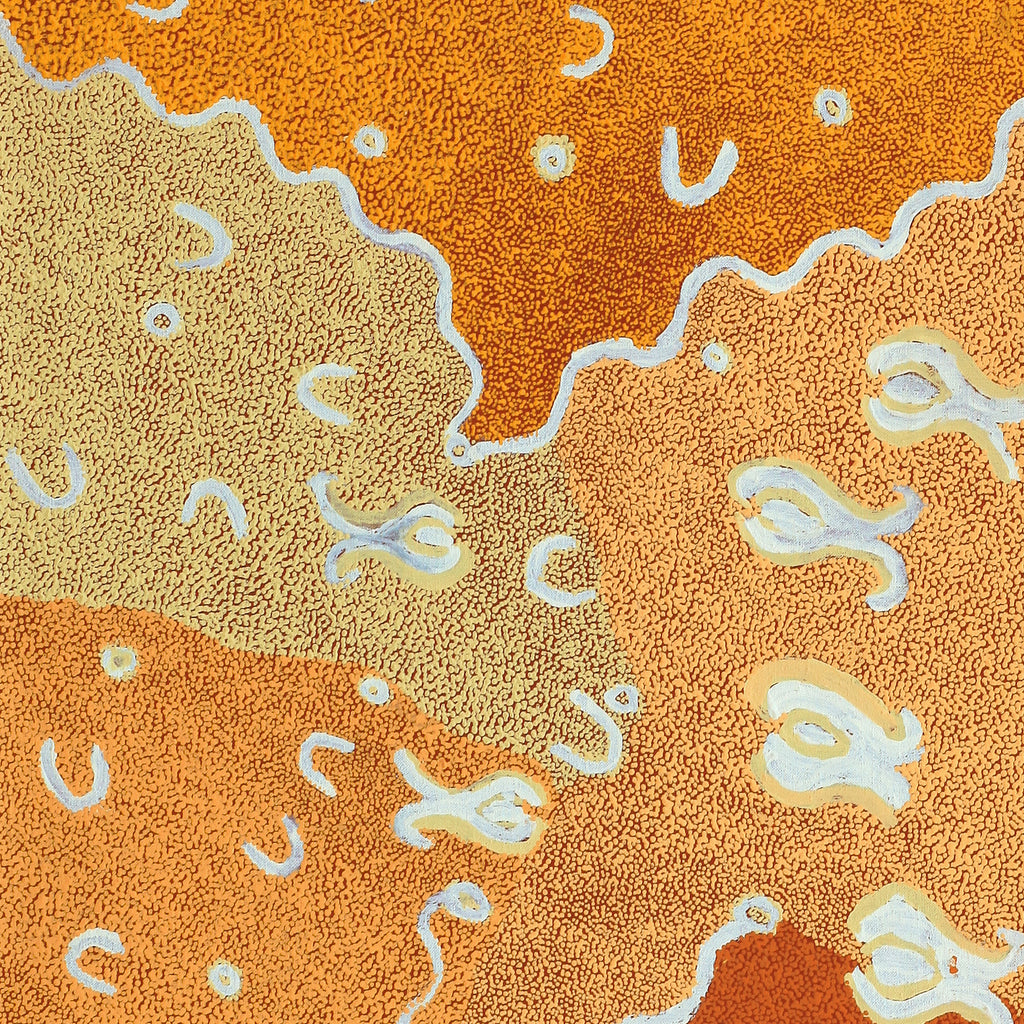





Leonie Napaltjarri Kamutu, Talapa at Lingakurra, 122x46cm
Your support helps the artist and their community art centre.
Free insured post & 120-day returns Ships from Tasmania within 1 business day Arrives in 1–3 days (Aus) · 5–10 days (Int’l*) Guaranteed colour accuracy
Community Certified Artwork
This original artwork is sold on behalf of the community-run art centre. It includes their Certificate of Authenticity.
– Original 1/1
- Details
- Artwork
- Artist
- Art Centre
- Aboriginal Artist - Leonie Napaltjarri Kamutu
- Community - Ikuntji (Haasts Bluff)
- Aboriginal Art Centre - Ikuntji Artists
- Catalogue number - 19/LK165
- Materials - Acrylic on linen
- Size(cm) - H46 W122 D2
- Postage variants - Artwork posted un-stretched and rolled for safe shipping
- Orientation - Painted from all sides and OK to hang as wished
Leonie depicts the Talapa Tjukurrpa (Lizard Dreaming) at Lingakurra (orange tongue) country, located south east of Kintore. This is the country and Tjukurrpa of her grandfather, Mutiyuriyuri. The story was passed down to Leonie’s father, Kamutu and then to her from her brother. In this Tjukurrpa, Talapa women (Black and yellow lizards) makie ceremony around the waterhole, drink the water from it and dance around it. Leonie depicts the tali (sandhills), puli (rocks) and kapi (rochholes) that dominate the country. The Talapa are sometimes depicted going into their holes where they live or moving amongst the landscape in search of bush tucker. Leonie also depicts the lightning Tjukurrpa on Lingakurra country where the Talapa women sit around the fire as a lightning storm passes over them.
Leonie was born in the bush at Ikunytji (Haasts Bluff). Her mother was Malyungka Nangala and her father was Kamutu Tjungarrayai. Her mother said she was from Tjukurla in WA. Leonie is the younger sister of Long Jack Phillipus Tjakamarra’s first wife, Susette. Leonie sees herself as the ‘younger auntie’ of Long Jack’s eldest daughter Charlotte Phillipus. Leonie attended school at Papunya. Her first husband was Dalton Abbott Ngala Bangarta, with whom she had two daughters. She had seven children with her second husband Kenny Lillius (b. 1951) of whom Kayleen Lillius is the eldest. Kenny was the brother of Kiwirrkura Chairman Jimmy Brown. Leonie says she is now on her own. She has many granchildren, some of them married with children of their own. Leonie’s Dreaming is Kanparraka or centipede. Kamutu’s dreaming was Mala (wallaby) and the country at Tjunginpa. Nyuman was her father’s and grandfather’s place, which is the place for the Dog Dreaming and the orange lizard Dreaming (Lingakurra). Her father’s brother was Tjungarrayi Kingsley, who was one of the first painters at Papunya in 1971.
Her sister Tilly Napaltjarri and her both learnt painting from their father’s brother.
A lot of stories are still being recounted of long journeys of people from various language groups, who travelled from rockholes and waterholes to caves and mountains finally arriving at Haasts Bluff. The locals, Luritja people of Haasts Bluff, were already here. Thus Haasts Bluff is a community rich of diversity in language and culture.
Ikuntji Artists was first established in 1992, after a series of workshops with Melbourne artist Marina Strocchi, and under the influence of the then community president, the late Esther Jugadai. The art centre was initially set up to fulfil the role of women’s centre providing services such as catering for old people and children in the community. After first experiences made in printing T-shirts, the artists began producing acrylic paintings on linen and handmade paper, which quickly gained the attention of the Australian and international art world as well as earning the centre an impressive reputation for fine art. The focus changed from a women’s centre to an art centre in 2005 with the incorporation of the art centre as Ikuntji Artists Aboriginal Corporation.
The artists draw their inspiration from their personal ngurra (country) and Tjukurrpa (Dreaming). They interpret the ancestral stories by using traditional symbols, icons and motifs. The artistic repertoire of Ikuntji Artists is diverse and includes for example: naive as well as highly abstract paintings told by each artist in their personal signature style. Throughout the 21 years of its existence the art movement in Ikuntji has flourished and constantly left its mark in the fine art world. At the same time the art centre has been the cultural hub of the community, maintaining, reinforcing and reinvigorating cultural practices through art-making.
Today Ikuntji Artists has eight key artists, who exhibit in Australia and internationally. They are represented in major collections across the globe.
Text: Melanie Greiner, Alison Multa and Dr Chrischona Schmidt
"Fast international delivery and superb quality." - Claire, FR – ART ARK Customer Review





















